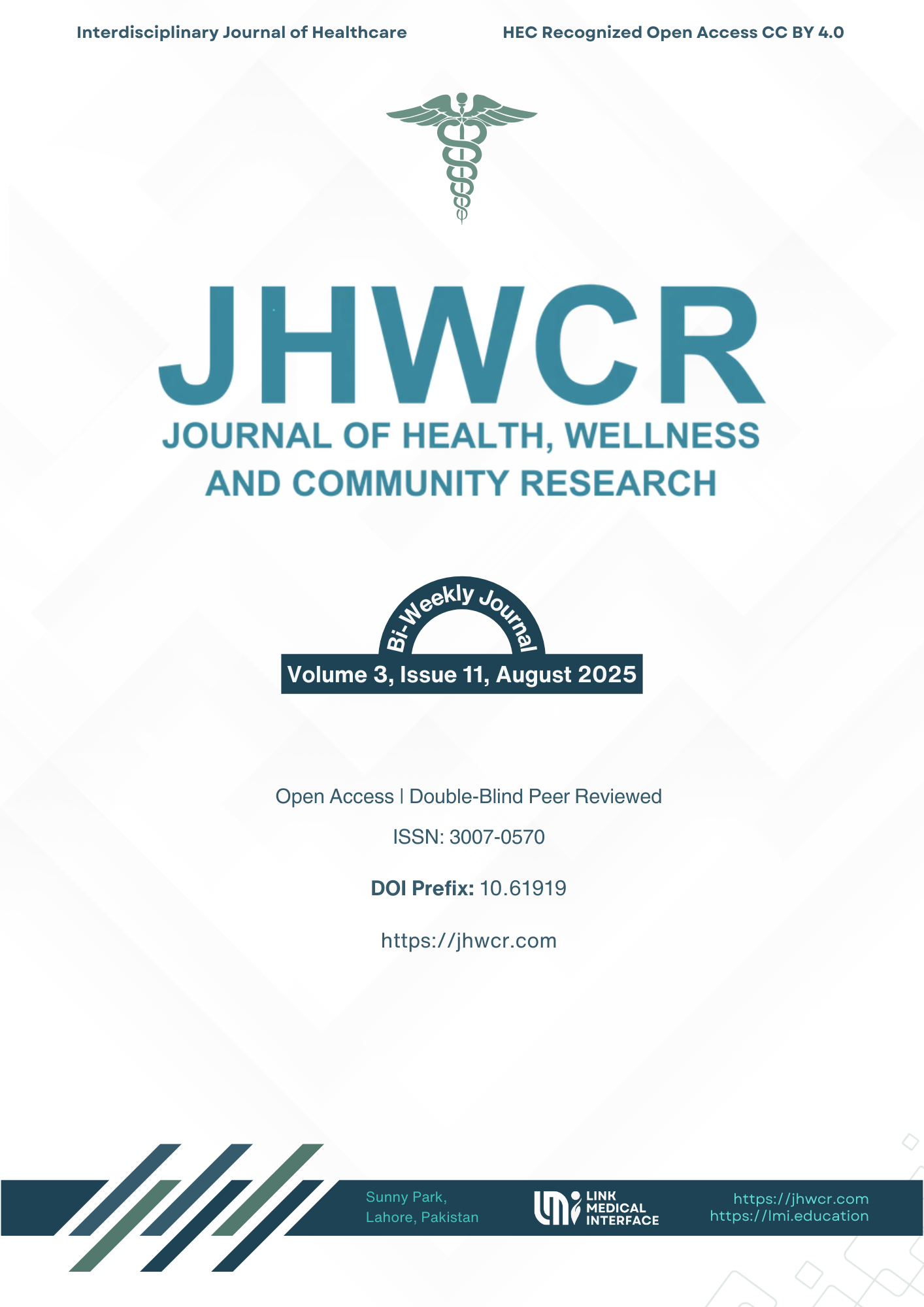Safety and Efficacy of Mini-Percutaneous Nephrolithotomy (mPCNL) in Paediatric Population Attending a Tertiary Care Health Setting
DOI:
https://doi.org/10.61919/67z70m03Keywords:
Pediatrics, mPCNL, renal calculi, safety, efficacy, complications, percutaneous nephrolithotomyAbstract
Background: Renal stone disease is a prevalent urological condition worldwide, with increasing incidence in pediatric populations, particularly in regions such as Pakistan that fall within the high-risk “stone belt.” Children with urolithiasis face significant risks of recurrence and complications, necessitating effective and minimally invasive treatment approaches. Mini-percutaneous nephrolithotomy (mPCNL), a modification of conventional PCNL using smaller instruments, has emerged as a promising technique to minimize morbidity while maintaining therapeutic efficacy. However, data on its safety and outcomes in pediatric populations remain limited, particularly from low- and middle-income countries. Objective: To determine the safety and efficacy of mini-percutaneous nephrolithotomy (mPCNL) in the pediatric population treated at a tertiary care hospital. Methods: A prospective observational study was conducted at the Department of Urology, Sandeman Provincial Hospital Quetta, from December 1, 2022, to June 1, 2023. A total of 140 children aged 3 months to 18 years with symptomatic renal calculi and sterile urine cultures were included. Procedures were performed under general anesthesia using the Karl Storz MIP system. Safety outcomes were assessed using the modified Clavien–Dindo classification, while efficacy was defined as stone clearance with residual fragments ≤4 mm confirmed by postoperative imaging. Data were analyzed with SPSS v22.0, using chi-square tests for categorical comparisons. Results: The mean age of patients was 9.91 ± 5.68 years, with 57.9% male and 52.9% presenting with left-sided stones. The mean operative time was 103.87 ± 33.39 minutes, and mean hospital stay was 4.34 ± 1.71 days. No complications were observed in 88.6% of patients. Minor complications (Grade I–II) occurred in 5.0%, and major complications (Grade III–IVa) in 6.4%, with no procedure-related mortality. Efficacy was achieved in 80% of cases, while stone-free status was confirmed in 23.6%. Stone complexity significantly influenced both safety (p = 0.002) and efficacy (p = 0.002). Conclusion: mPCNL is a safe and effective treatment option for pediatric renal stones, demonstrating low complication rates and high efficacy across a diverse patient population. Stone complexity remains a key determinant of outcomes, highlighting the importance of individualized treatment planning.
Downloads
Published
Issue
Section
License
Copyright (c) 2025 Asadullah, Muhammad Musa Kakar, Asaadullah (Author)

This work is licensed under a Creative Commons Attribution 4.0 International License.


